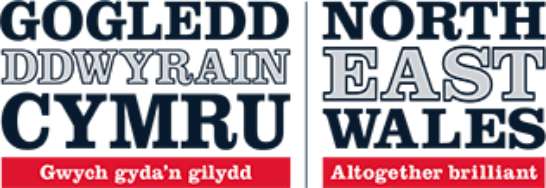Corwen Town Trail
The little market town of Corwen has punched above its weight for many centuries. Occupying a strategic spot at the foot of the Berwyn Mountains beside a wide sweep of the River Dee, it’s been visited in turn by sixth century saints, invading and defending armies, cattle drovers and Victorian coach passengers.
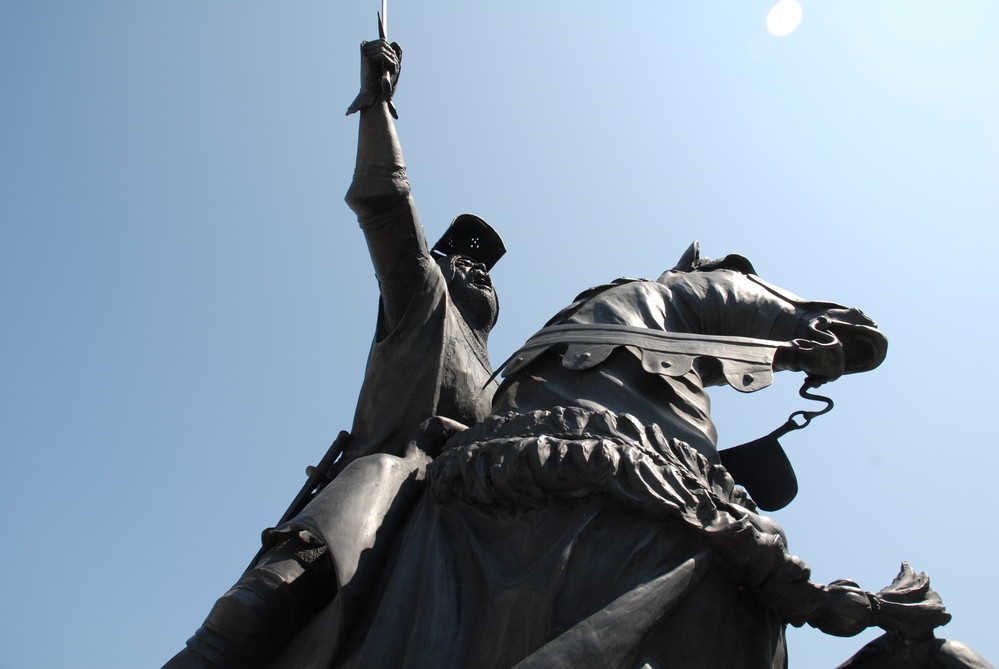
Distance: 0.6 miles /1 km excluding Coed Pen y Pigyn
Difficulty: Fairly flat except for optional moderate ascent to Coed Pen Y Pigyn
Walking time: 45 minutes
Start point: Green Lane car park LL21 ODN
Public transport: Traveline Cymru 0800 464 0000,
National Rail Enquiries 03457 484950
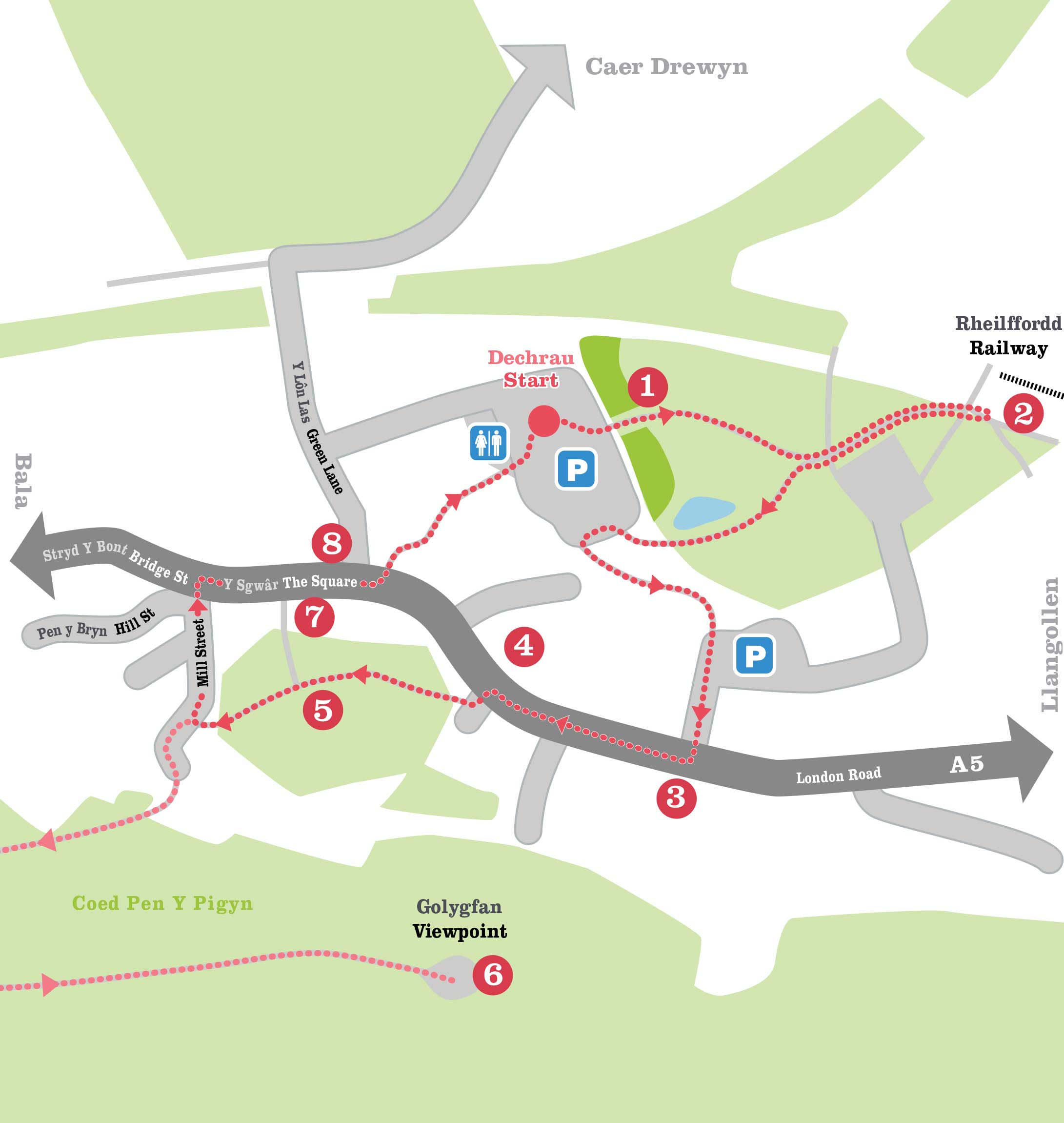
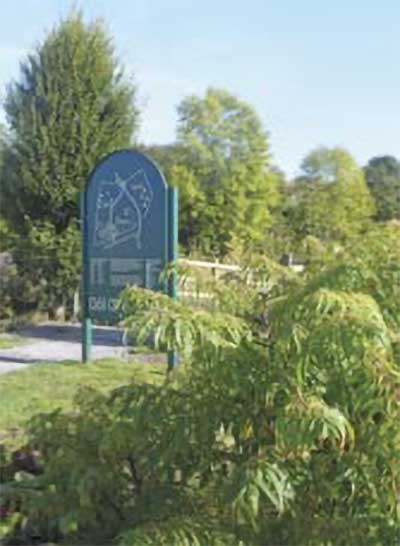
Dôl Corwenna
Head for the green sign on the eastern side of the car park and follow path.
Don’t be fooled. Dôl Corwenna might look like a pretty little park in the heart of Corwen (which it is). But it’s also an ecological site intended to test the effects of climate change. As new conditions emerge, the grass and wildflower meadows and the blooms in the Climate Calendar will demonstrate the transforming Welsh landscape. The Community Orchard has an equally important purpose – providing the town with a shared harvest of apples, pears, cherries and, of course, Denbigh Plums.
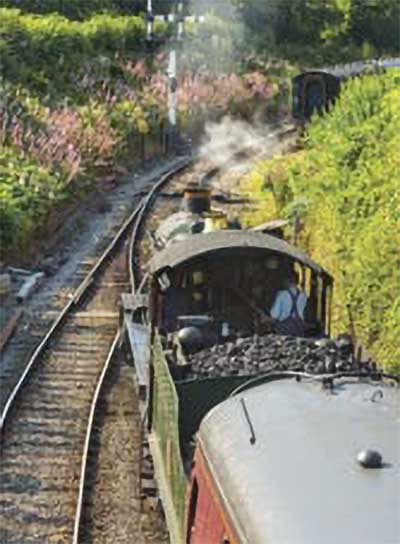
Heritage
Railway
Corwen had been waiting for the train for nearly 50 years when it finally arrived in 2014. A £1 million extension to the Llangollen-Corwen Heritage Railway brought a welcoming toot and hiss of steam to the town for the first time since the Beeching axe fell in 1965. Now you can ride for 10 glorious miles from the new platform to Llangollen via stations at Carrog, Glyndyfrdwy and Berwyn, hugging the banks of the River Dee as you go. It’s one of the most beautiful railway journeys in Britain.
Back at the meadow, take the left-hand footpath. Turn sharply left at the car park to join the road that brings you to the A5 London Road.
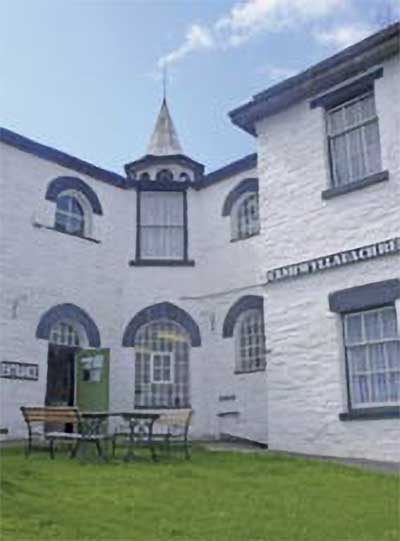
Corwen Manor
Thomas Telford’s London to Holyhead road, which you are about to cross, made Corwen an important staging post for travellers between England and Ireland in the 19th century. Sadly not everyone could afford the price of a stagecoach – or even a loaf of bread. Corwen Manor was built as a workhouse in 1840 to house 150 paupers from seven parishes, men in one wing and women in the other. It’s now a craft centre and café. Opposite, where a convenience store now stands, was once a building called Tramps Rest. Here vagrants earned their food and lodging by breaking a hundredweight of stone a day – which doesn’t sound like too much of a rest.
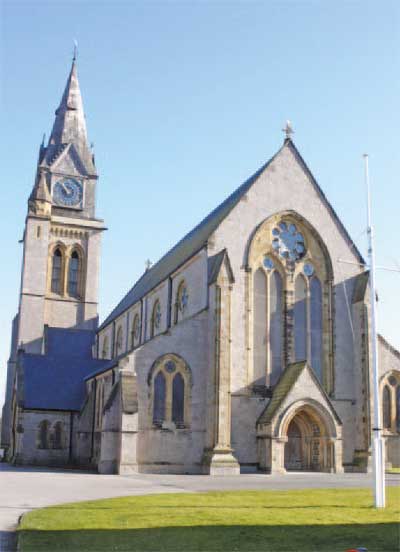
Corwen Old
Police Station
Corwen Old Police Station, next to the lovely Wesleyan Chapel, was built in 1871 to provide four cells, apartments for a constable and a courthouse. Fortunately there’s plenty of space in this handsome Grade II listed building because the first incumbent, Sergeant Hugh Williams, had no fewer than 10 children. It was a police station and court until the 1970s and has now been converted into luxury self-catering and bed and breakfast accommodation.
Turn left beside Church House and enter the churchyard through the side entrance.
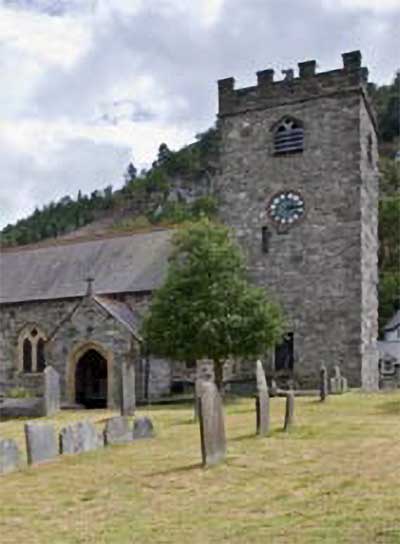
Church of St Mael
and St Sulien
Saint Mael and Saint Sulien founded their church here in the sixth century but the present building dates from the 1200s. A prehistoric standing stone is built into the entrance porch and to the right stands the shaft of a possibly ninth century preaching cross. Inside is a font that could be 1,000 years old. Round the back, behind bars, the lintel above the priest’s doorway is carved with a cross – supposedly the mark made when Owain Glyndŵr hurled down his dagger from Pen y Pigyn hillside in a rage.
Leave the churchyard by the metal turnstile to the west (look out for the gravestone of Owen Owen the engine driver away to the left).
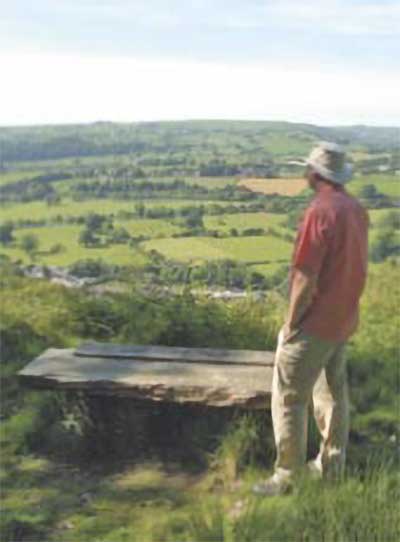
Coed Pen y Pigyn
For the detour to Coed Pen y Pigyn, turn left and follow the footpath at the end of Mill Street. It’s uphill, grassy and stony – but the views are spectacular. Otherwise just turn right for the town centre.
As you climb through the oak woodland of Coed Pen y Pigyn, home of many species of bat, you’ll pass the circular Dagger Trail on your left and an atmospheric Gorsedd stone circle erected for the National Eisteddfod of 1919. At the top of the path, 800 feet above the town and with the River Dee laid out before you like a ribbon, is a stone monument to celebrate the marriage of the Prince of Wales in 1863.
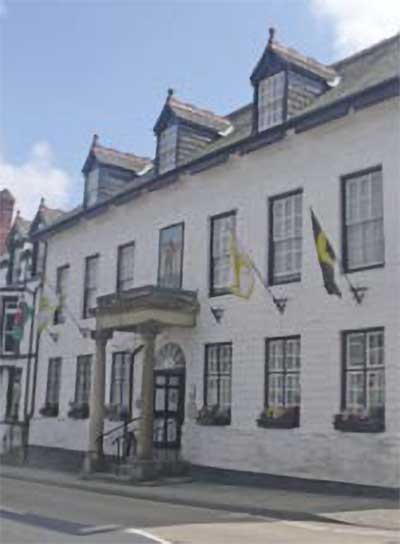
Owain
Glyndŵr Hotel
The frontage of the Owain Glyndŵr Hotel, with its Italianate portico, dates from the early 19th century – boom years in Corwen thanks to Thomas Telford’s drastic improvements to the London to Holyhead road. Inside it’s much older, having originally been a monastery in the grounds of the church.
It was here in 1789 that the very first public eisteddfod in Wales was held – a tradition leading to the great cultural festival of the National Eisteddfod of Wales. Less cheerily, the hotel is said to be haunted by the ghost of a woman whose affair with a monk ended in tears.
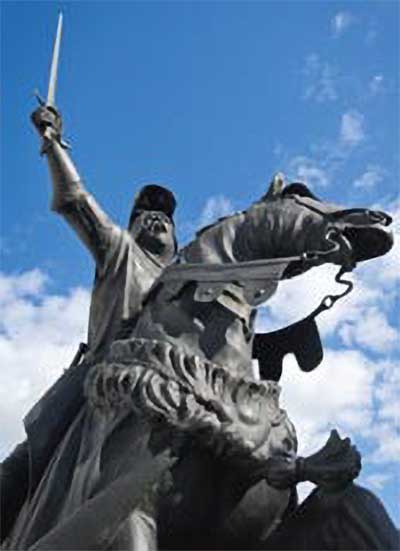
Statue of Owain
Glyndŵr
Here he is: Wales’s greatest hero and Corwen’s favourite son. This superb bronze statue of Owain Glyndŵr was erected in 2007 to mark the moment in 1400 when he declared himself Prince of Wales and launched a national revolt against English rule. He soon dominated much of Wales but, under pressure from the future Henry V, his star began to wane and by 1415 he had disappeared, never to be captured. The “father of modern Wales” is celebrated every September 16th on Owain Glyndŵr Day.
From The Square, take the passageway between the butcher’s shop and the café to return to the car park.
